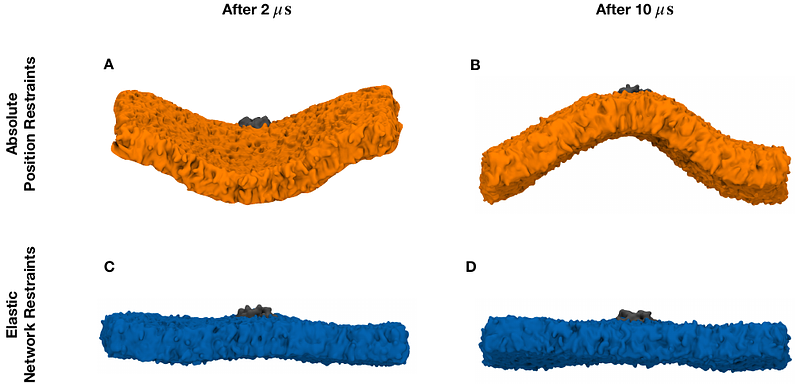SARS-CoV E protein couples asymmetric leaflet thickness and curvature deformations

SARS-CoV E protein couples asymmetric leaflet thickness and curvature deformations
Sandberg, J. W.; Brannigan, G.
AbstractThe Envelope protein (E protein) of SARS-CoVs 1 and 2 has been implicated in the viral budding process and maintaining the spherical shape of the virus, but direct evidence linking the protein to long-range membrane deformation is still lacking. Computational predictions from molecular simulation have offered conflicting results, some showing long-range E-induced membrane curvature and others showing only local deformations. In the present study, we determine the mechanism driving these deformations by modulating the degree of hydrophobic mismatch between protein and membrane. We encounter a barostat artifact present in common simulation software that may be responsible for previous findings in support of the E protein inducing long-range curvature. Our results indicate that the E protein does not induce long-range curvature, but does exhibit severe local deformations that are exacerbated by hydrophobic mismatch. These deformations occur in conjunction with local leaflet thickness asymmetry, suggesting asymmetry and curvature couple to reduce the free energy cost of a deformed membrane.